3 Vegetarian And Gluten-Free Dinners From One Shopping List
Dietary restrictions never tasted so good.
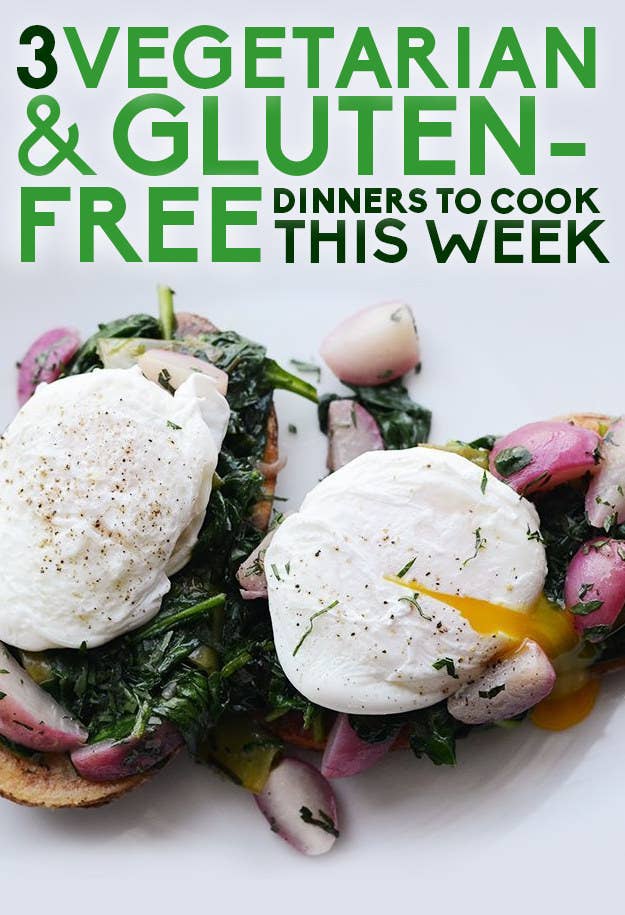
Use the grocery list below to make the three dinner recipes in this post over the course of a week.
Making all three dinners within a week of grocery shopping will ensure that the ingredients stay fresh. You'll have to make the millet bowl before the falafel, since the falafel calls for some of the leftover cooked millet. Each recipe serves two people, so plan accordingly.
Here are all the groceries you'll need to make these three dinners:
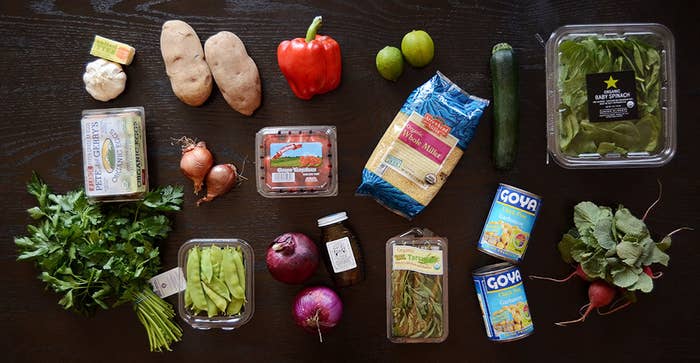
PRODUCE
Baby spinach, 6-ounce container, $2.19
Cherry tomatoes, 1 pint, $1.99
Garlic, 1 head, $0.79
Limes, 2, $1.58
Parsley, 1 bunch, $0.99
Radishes, 1 bunch, $1.99
Red onion, 2, $1.18
Red bell pepper, $0.99
Russet potatoes, 2 (about 1/2 pound), $0.48
Shallots, 2, $0.99
Snow peas, 8-ounce container, $2.99
Tarragon, 0.75-ounce box, $1.99
Zucchini, $0.79
EGGS AND DAIRY
Eggs, 1/2 dozen, $1.00
Unsalted butter, 8-ounce package, $1.99
PANTRY STAPLES
Chickpeas, 2 15-ounce cans, $2.38
Honey,* 8-ounce bottle, $3.49
Millet (gluten free), 28-ounce bag, $3.79
GROCERY TOTAL: $31.60 (based on Indianapolis, Ind., prices at peapod.com)
*Vegans: Substitute pure maple syrup for honey.
Pssst... I'm assuming you have olive oil, kosher salt, and freshly ground pepper.




MILLET BOWL WITH CHICKPEAS, RED PEPPER, AND SNOW PEAS (VEGAN)
Makes 2 servings
Recipe by Christine Byrne
When the millet is cooked, cool and refrigerate 1/2 cup, which you'll use to make the tarragon falafel another day (recipe below). Save the remaining half of the red bell pepper for that meal, too.
Ingredients
3/4 cup raw millet
1 1/2 cups water
Kosher salt
Freshly ground pepper
Zest of 1 lime, finely grated
2 tablespoons extra virgin olive oil, divided
1 15-ounce can chickpeas, rinsed and drained
1 large red onion, thinly sliced
2 cloves garlic, minced
1/2 cup snow peas, trimmed and finely sliced, lengthwise
1/2 large red bell pepper, cut in 1/4-inch pieces
Juice of 1 lime, strained
2 teaspoons honey (or 2 teaspoons pure maple syrup, for vegan)
1 tablespoon parsley, chopped
Procedure
To prepare the millet: Add raw millet to a small saucepan over medium heat and toast 4-5 minutes, stirring occasionally, until millet is lightly browned and fragrant. Add water, 1/4 teaspoon kosher salt, freshly ground pepper, and lime zest, and bring the mixture to a boil over high heat. Lower the heat to a simmer, and cook, covered, for 15 minutes. Turn the heat off and let the cooked millet sit, covered, for 10 minutes. (Meanwhile, prepare your chickpeas and vegetables, as below.) When you remove the lid, the liquid should be completely absorbed. Fluff the cooked millet gently by running a fork through it and mixing. Cool and refrigerate 1/2 cup of millet and reserve it for the tarragon falafel (recipe below).
As the millet cooks, heat the remaining tablespoon of olive oil in a large skillet over medium-high heat. When the oil is hot, add the drained chickpeas and red onion to the pan. Cook, shaking the pan often, until the chickpeas are starting to brown, about 2 minutes. Add the minced garlic, sliced snow peas and cubed red pepper and cook, shaking the pan often, until the vegetables are slightly cooked and the garlic is fragrant, about 3 minutes.
In a large mixing bowl, whisk together lime juice and honey. Add cooked millet and cooked chickpea-vegetable mixture to the mixing bowl and toss everything together, being sure to coat everything evenly with the honey-lime mixture.
Divide between two bowls, garnish with the chopped parsley, and serve.
Once you've toasted the millet, add the lime zest and water (it'll look like a lot of water).

Your millet is cooked when the water is completely absorbed. Fluff the grains by gently running a fork through them.
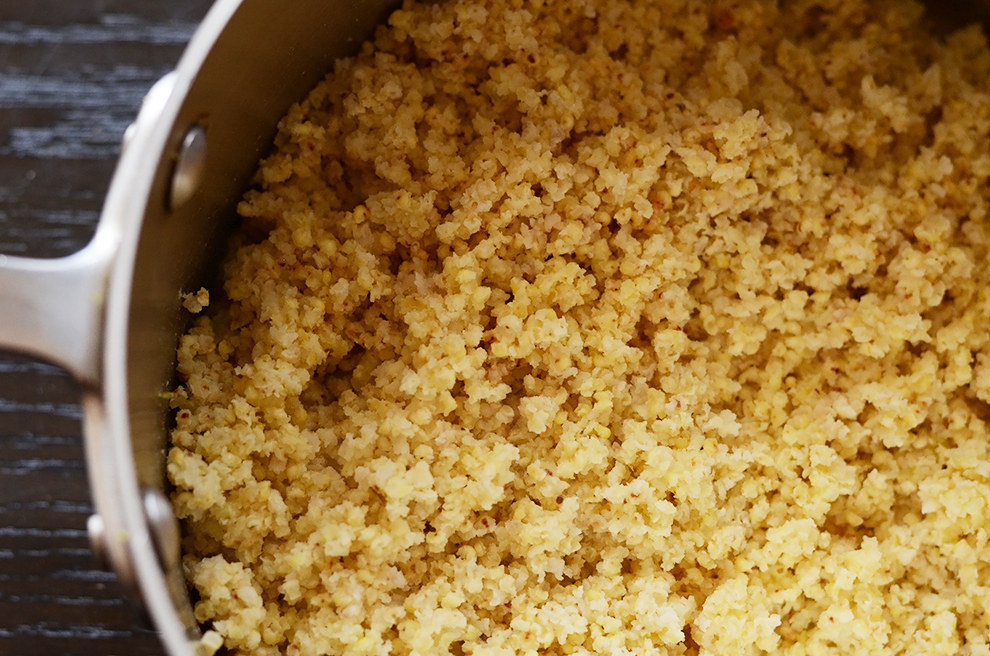
Add your onions and chickpeas to a hot pan. It's OK to crowd them.
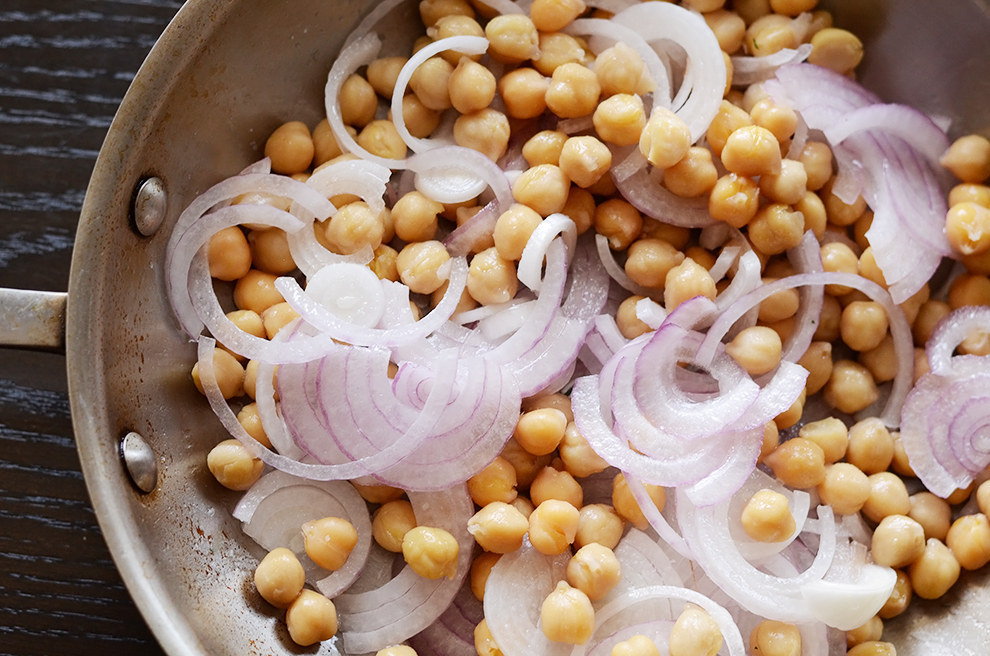
Cook until the onions are soft and translucent and the chickpeas have browned a little bit.
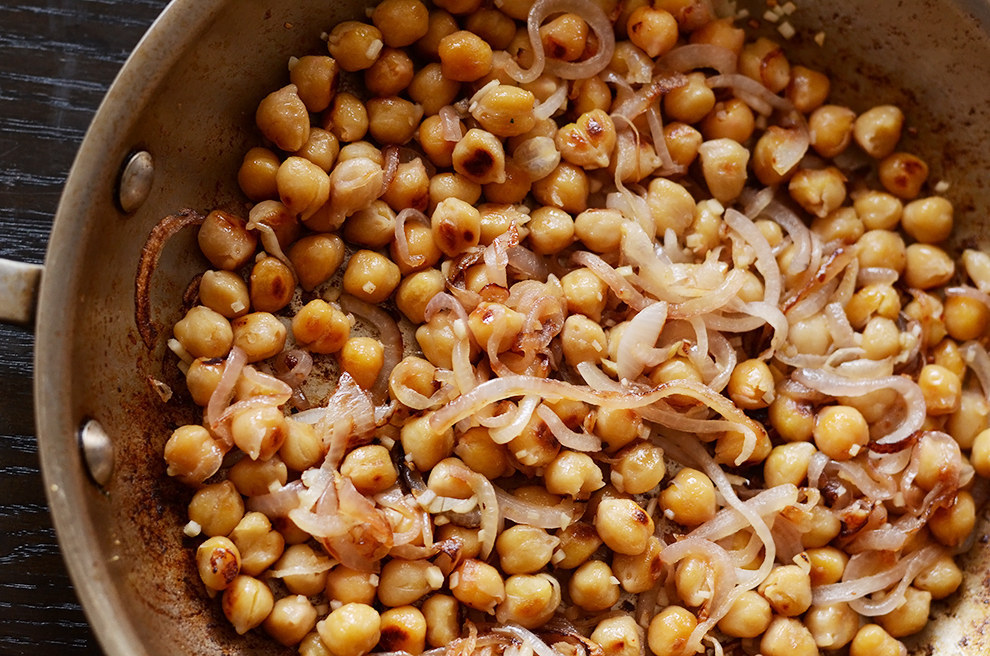
Add the garlic, red pepper, and snap peas, and cook just until the vegetables are al dente.
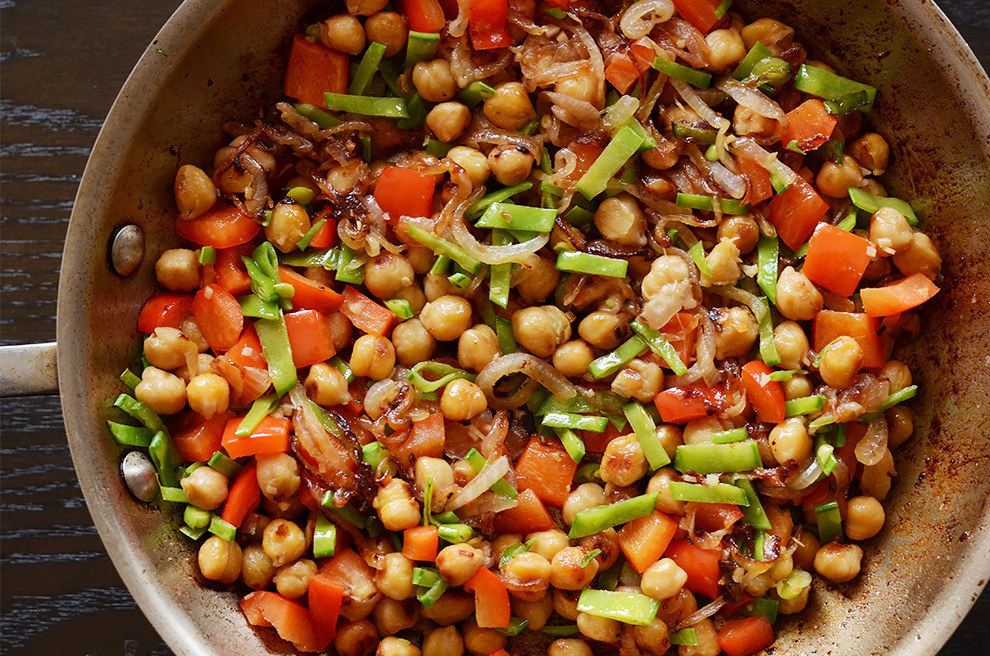
Once everything is cooked, whisk together lime juice and honey or maple syrup in a medium mixing bowl, then add the millet and the vegetables.

Toss together, garnish with herbs, and split evenly between two bowls to serve.
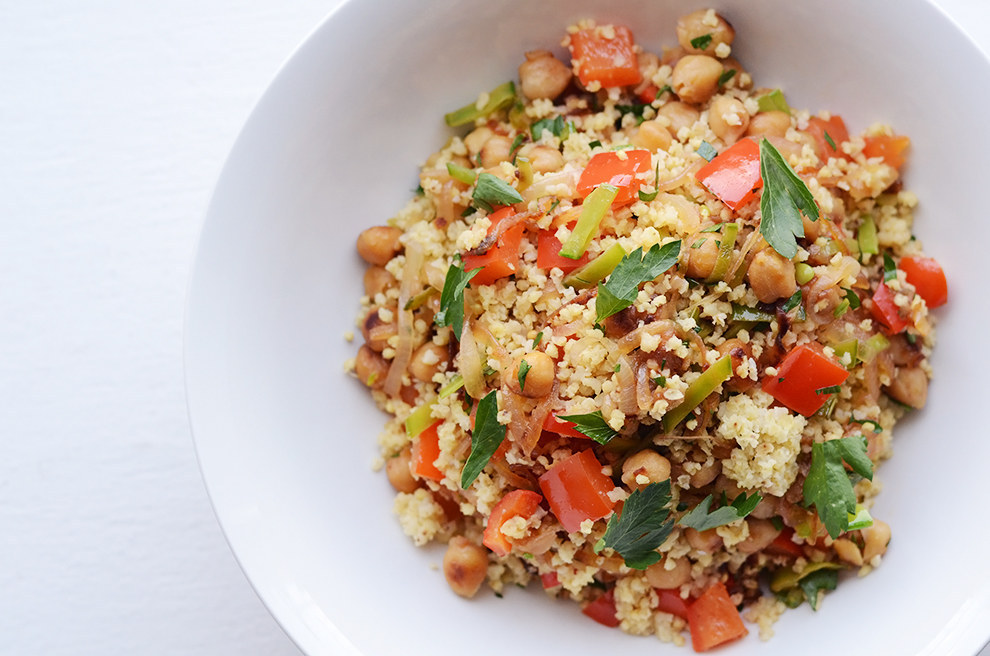
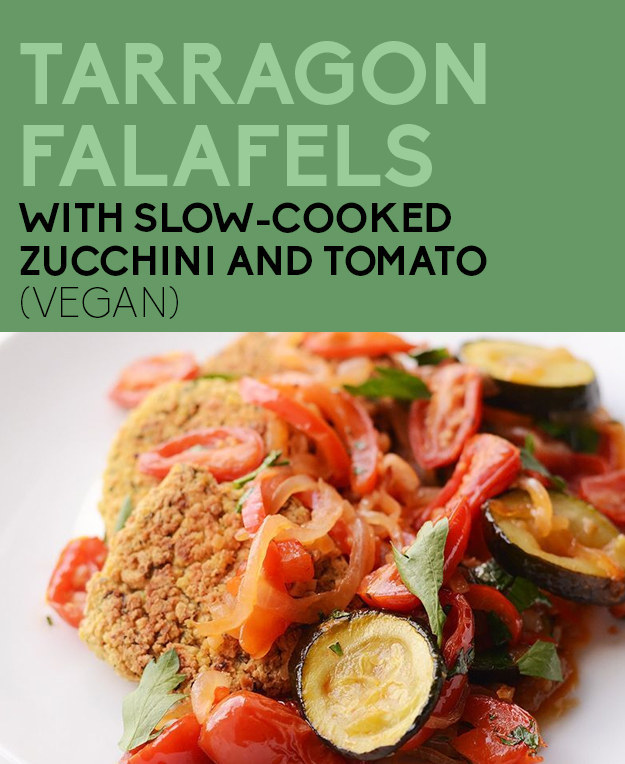
TARRAGON FALAFEL WITH SLOW-COOKED ZUCCHINI AND TOMATO (VEGAN)
Makes 2 servings
Recipe by Christine Byrne
Ingredients
For the falafel:
Kosher salt
Freshly ground pepper
1 15-ounce can chickpeas, rinsed and drained
3 cloves garlic, coarsely chopped
1 medium shallot, coarsely chopped
2 tablespoons tarragon, coarsely chopped
1 tablespoon olive oil
1/2 cup cooked millet (leftover from MILLET BOWL WITH CHICKPEAS, RED PEPPER, AND SNOW PEAS)
For the vegetables:
2 tablespoons extra virgin olive oil
3 cloves garlic, minced
Kosher salt
Freshly ground pepper
1 teaspoon honey (or 1 teaspoon pure maple syrup, for vegan)
1 large red onion, thinly sliced
1 large zucchini, thinly sliced crosswise into coins
1/2 large red bell pepper, thinly sliced
1 pint cherry tomatoes, halved
2 tablespoons chopped tarragon
1 tablespoon chopped parsley, for garnish
Procedure
For the falafel:
Arrange two racks in the oven, and preheat oven to 425°F. Line a large rimmed baking sheet with parchment paper.
In a food processor fitted with the blade attachment, combine chickpeas, garlic, shallots, tarragon, and olive oil. Pulse the mixture 8-10 times, until the chickpeas are mashed but still slightly chunky. Transfer chickpea mixture to a large mixing bowl, then add the millet and mix to combine. Divide the mixture into 6 equal balls, then roll each ball tightly and place on the baking sheet. Press down on each ball with your palm to form a disk roughly 1 inch thick and 3 inches in diameter.
Bake falafel for 40 minutes at 425°F, flipping halfway, until lightly browned on the outside. Prepare the vegetables (instructions below) while the falafel is baking.
For the vegetables:
As the falafel is baking, heat olive oil in a large skillet over low heat. Add minced garlic, season with salt and pepper, and cook 2 minutes until the garlic is just starting to soften. Add honey and stir to combine. Add red onion, zucchini, red pepper, cherry tomatoes, and tarragon to the pan all at once, and stir to coat the vegetables in the honey/olive oil mixture. Remove the pan from the stove and place it in the oven, uncovered. Cook 35 minutes, stirring once halfway, until vegetables are completely soft. Your vegetables should be done at the same time the falafel finishes baking.
To serve, place 3 falafel on each plate, and divide the vegetables evenly among the two. Garnish with chopped parsley.
Put all falafel ingredients, except the millet, into a food processor fitted with the blade attachment.
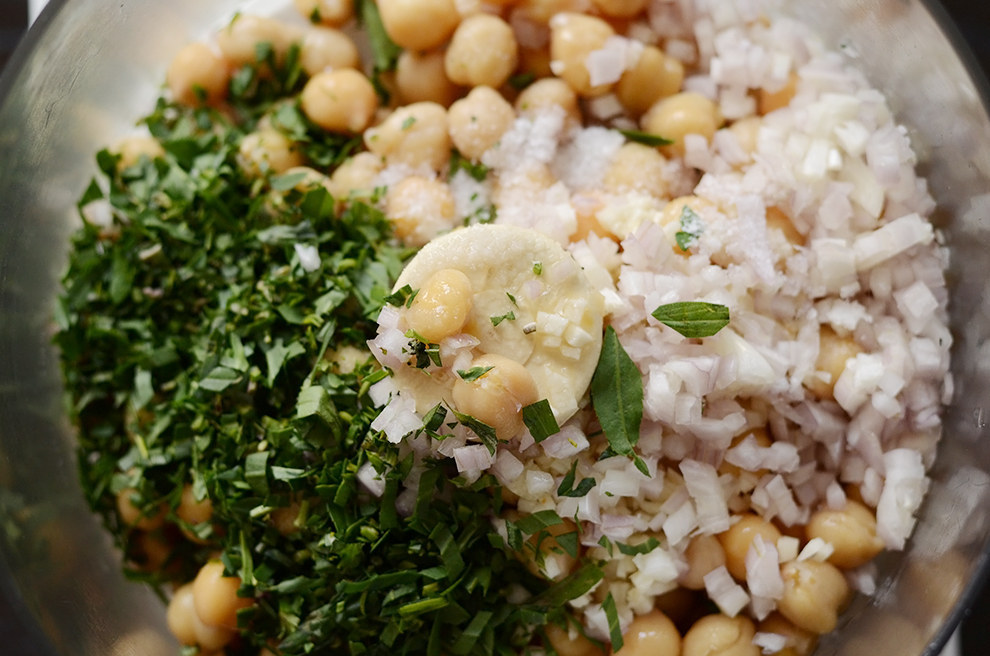
Pulse 8-10 times to make a pastelike mixture that's still slightly chunky.

Transfer the chickpea mixture from the food processor to a bowl, then add the millet and use your hands to mix everything together.
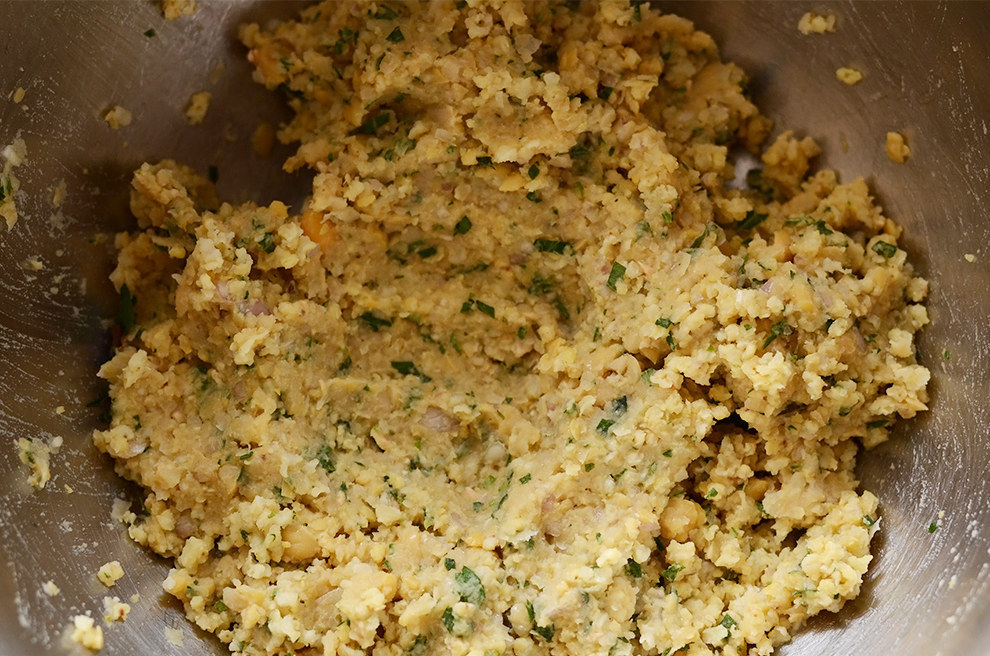
Form the falafel mixture into six equal balls, transfer them to a baking sheet lined with parchment paper, then press them into disks.
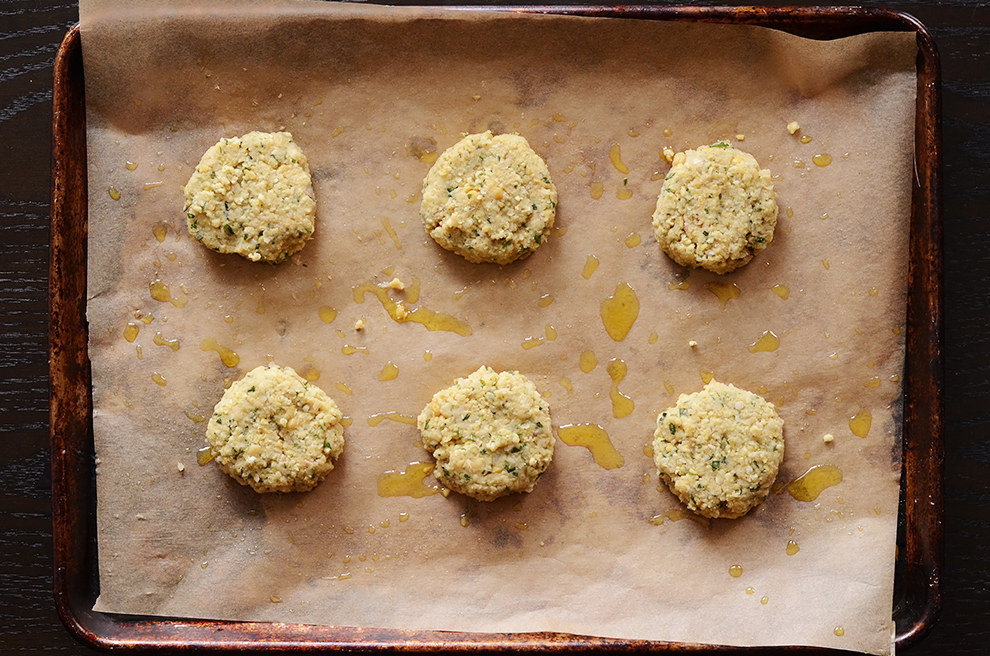
Bake at 425°F for 40 minutes, flipping halfway through, until they are lightly browned.
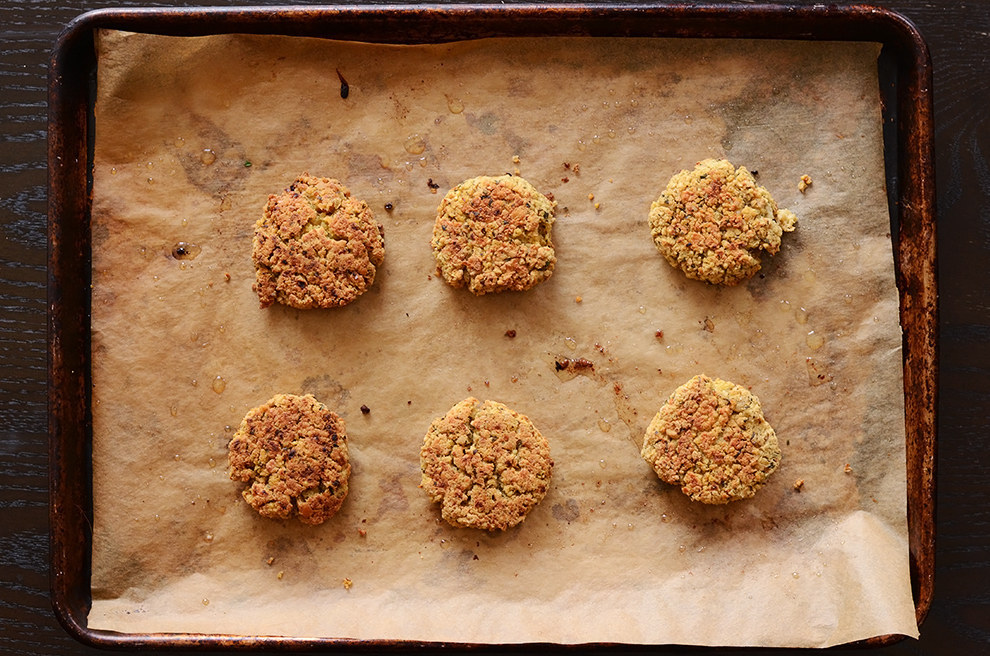
As your falafel cooks, you'll prepare the vegetables. Start by cooking your garlic in olive oil over super-low heat.
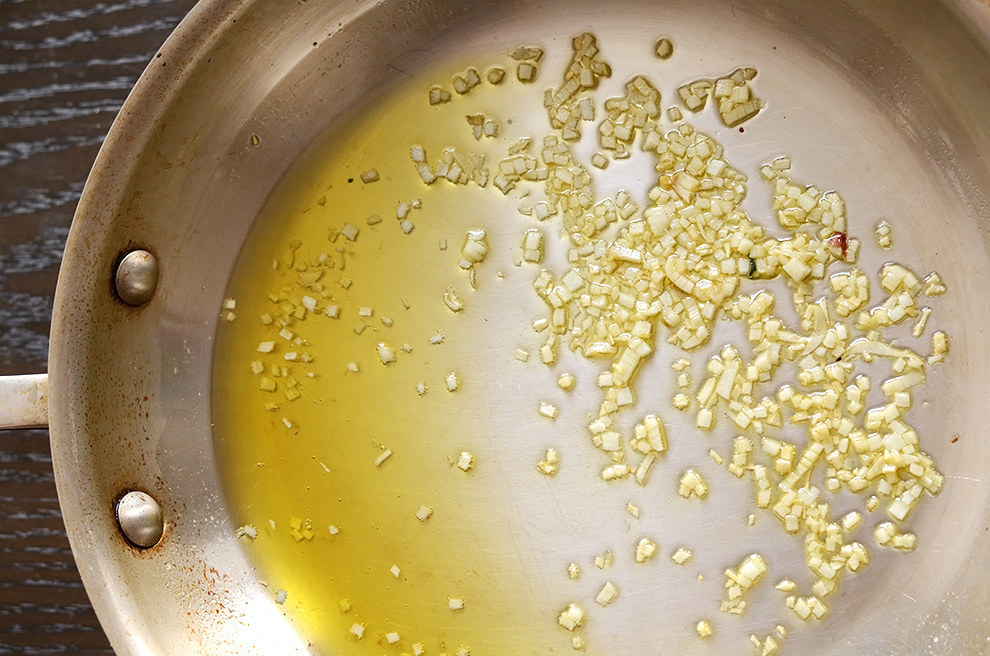
Then, just pile all of your vegetables on top, along with the tarragon and honey (or maple syrup), stir them around a little, and put them in the oven with the falafel.

The vegetables will be done at the same time as the falafel. They'll be soft, sweet, and slightly liquid-y.
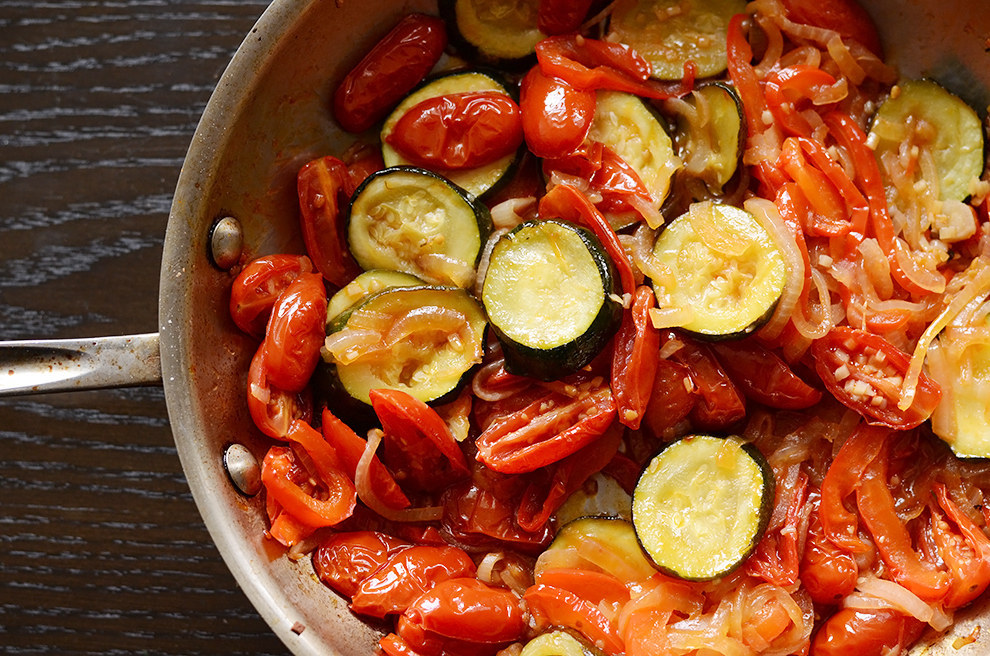
Serve three falafel on each plate and divide the vegetable mixture evenly.

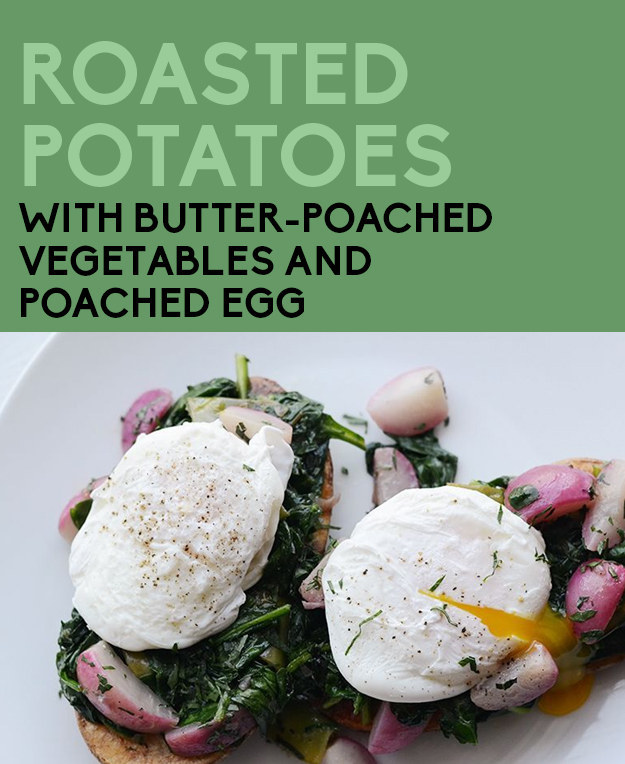
ROASTED POTATOES WITH BUTTER-POACHED VEGETABLES AND POACHED EGG
Makes 2 servings
Recipe by Christine Byrne
Ingredients
2 small russet potatoes (about 1/2 pound)
1 tablespoon extra virgin olive oil
Kosher salt
Freshly ground pepper
4 tablespoons unsalted butter
1 cup radishes, quartered
1 medium shallot, minced
1/2 cup snow peas, trimmed and cut in 1/2-inch pieces
1 6-ounce container baby spinach
1 tablespoon parsley, chopped
1 tablespoon tarragon, chopped
4 large eggs
Procedure
Preheat oven to 400°F, and line a large rimmed baking sheet with parchment paper. Scrub potatoes, dry them thoroughly with paper towels, then cut each one in half, lengthwise. Transfer potato halves to the rimmed baking sheet, coat evenly with the olive oil, and season liberally with salt and pepper. Position the seasoned potato halves cut-side down on the baking sheet and roast for 50 minutes at 400°F, flipping them halfway, until they are cooked through (soft on the inside and crispy on the outside).
While the potatoes are roasting, melt butter in a large skillet over low heat. Add the quartered radishes and shallots, season with salt and pepper, and stir to coat the radishes. Cook on low for 2-3 minutes, stirring occasionally, until radishes have begun to soften. Add snow peas, stir the vegetable mixture, and cook for another 3 minutes over low heat, until the vegetables are slightly cooked but still crunchy. Add spinach and stir the mixture continuously until the leaves have wilted completely. With the heat on the lowest setting, let the vegetables continue to cook gently while you poach your eggs, 12-15 minutes.
Meanwhile, poach eggs: Fill a medium (at least 3 quart) saucepan or pot with about 5 inches of water. Bring the water to a simmer, then turn the heat to low. If you have a thermometer, use it to check the water temperature. The ideal temperature for poaching eggs is between 180-190°F. If you don't have a thermometer, you know you're at the right temperature when there are tiny little bubbles all over the bottom and sides of the pot, but none bubbling up to the surface. Crack each egg into a separate small bowl or mug, then stir the water in a circle gently with a wooden spoon to create a whirlpool. Drop 1 egg into the center of the whirlpool. The white will wrap around the yolk and start to set. Let the egg poach in the water for 3 minutes, keeping the temperature steady. Remove the egg with a slotted spoon and drain on a paper towel-lined plate. Repeat with the other 3 eggs, again creating a whirlpool before dropping in the egg.
To serve, divide the potato halves between two plates, then top each half evenly with the butter-poached vegetables and a poached egg.
Start with the potatoes cut-side down, and be sure to coat them evenly with olive oil and salt.

Flip the potatoes halfway, then cook until they're soft on the inside and brown and crispy on the outside.

Cook the radish and shallot on low, in lots of butter, just until they're starting to soften.
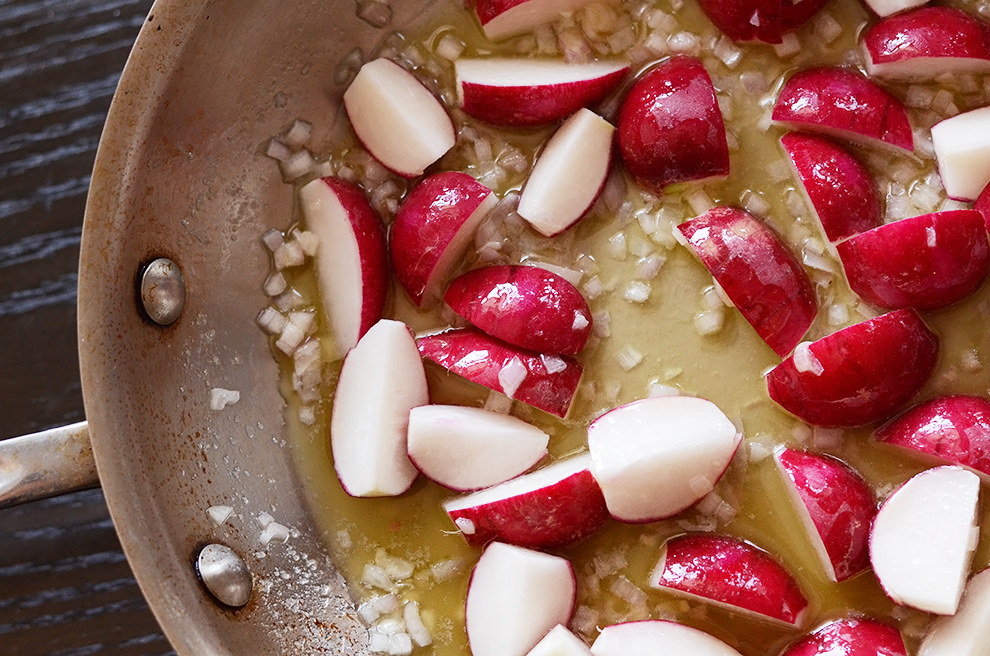
Then add the snow peas and stir everything around.
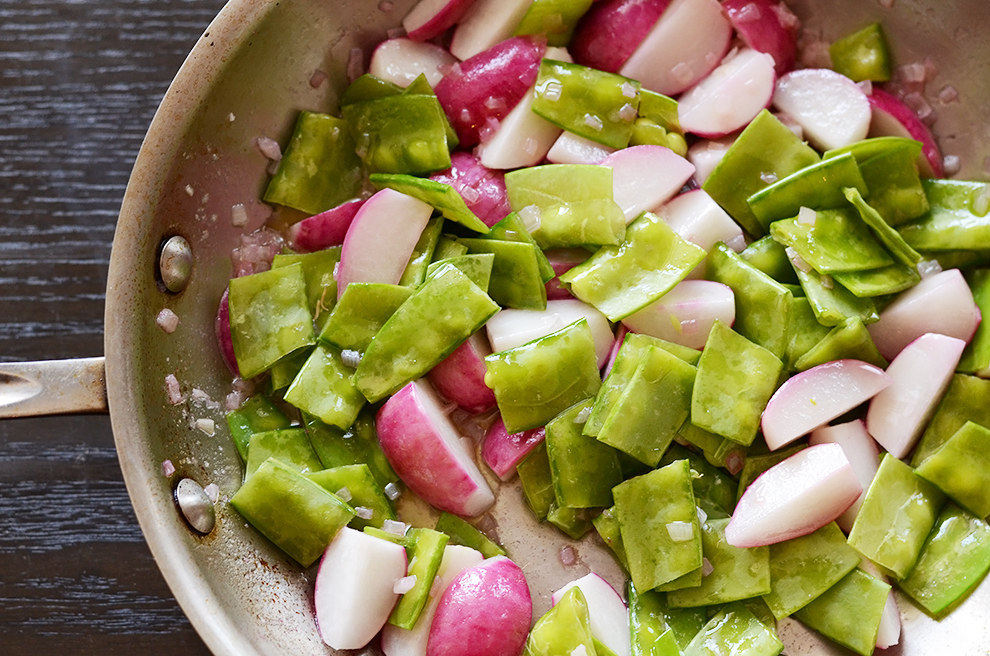
Cook until the snow peas are al dente and the radishes are starting to lose their color.
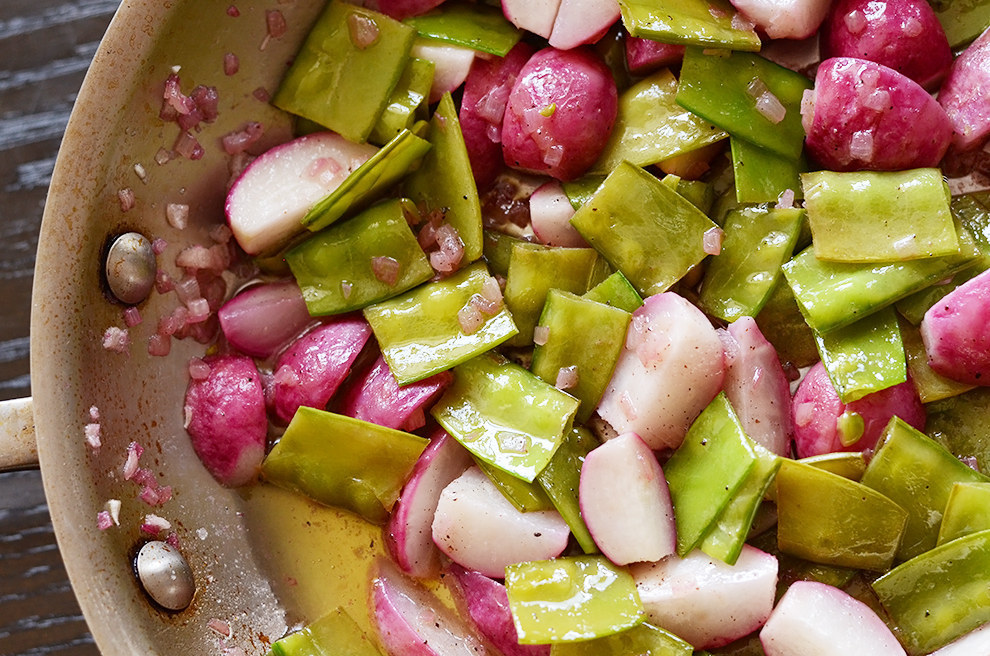
Add the spinach (it'll look like a lot).
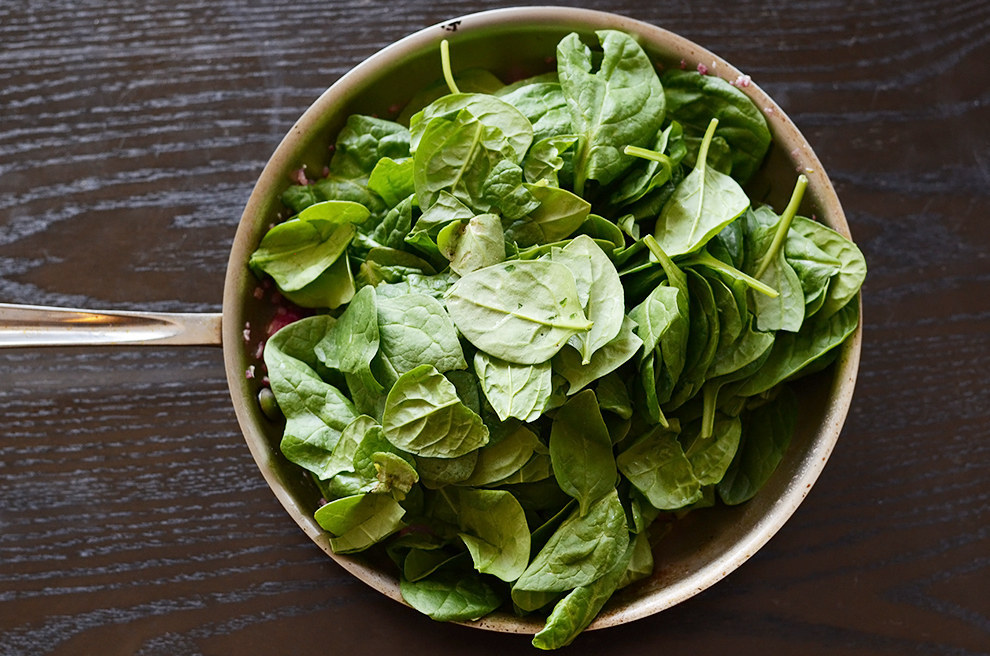
Cook everything over super low heat until the spinach is wilted, and the radishes and snow peas are super soft.
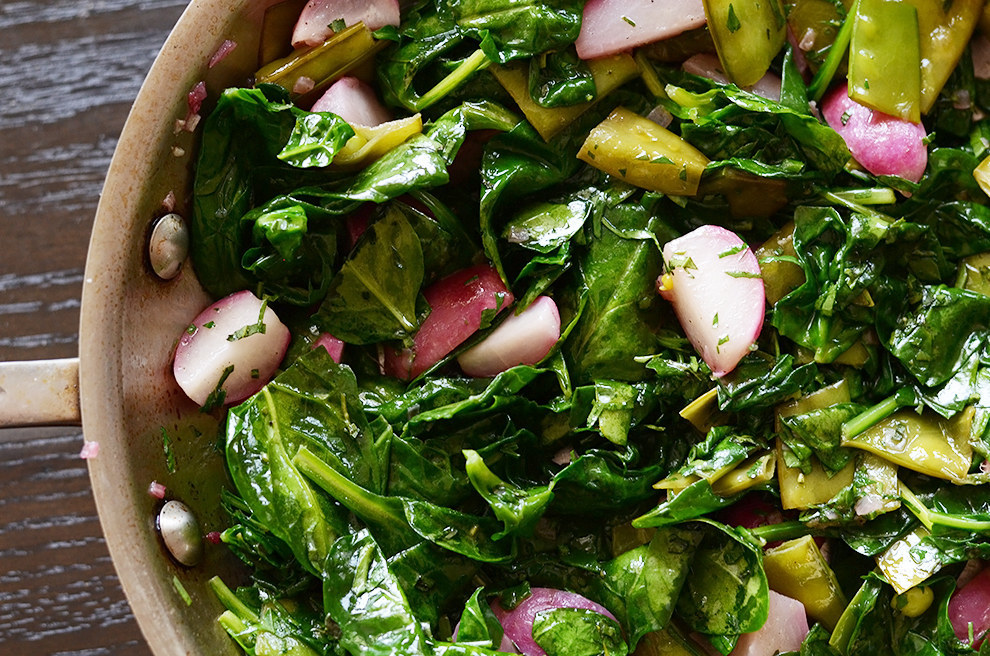
To poach your eggs, it's really important to get your water to 180-190°F.
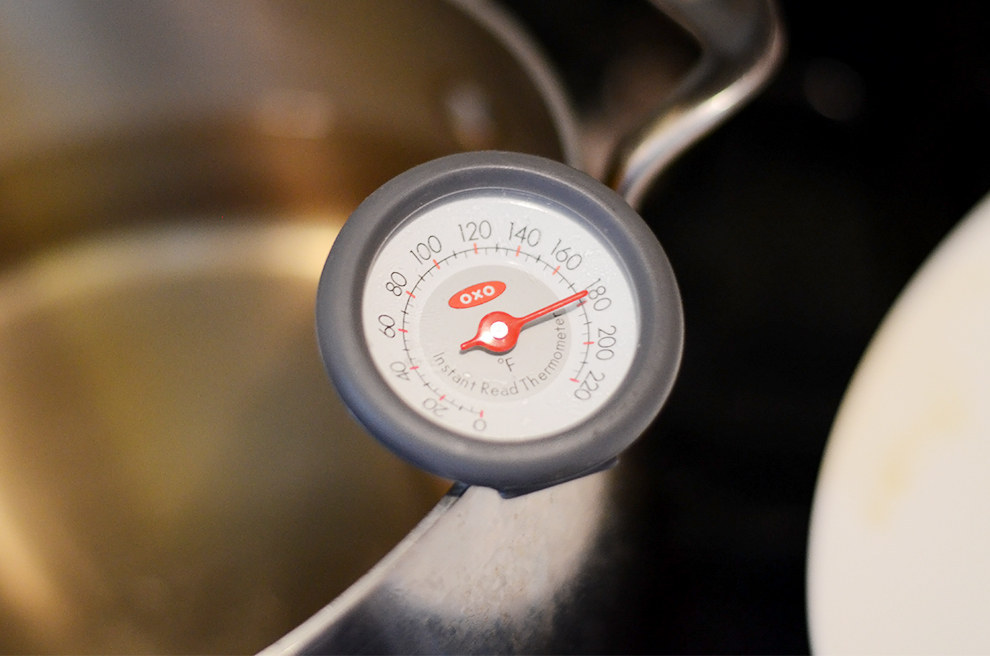
Then, stir it gently in a circle with a spoon to make a whirlpool.
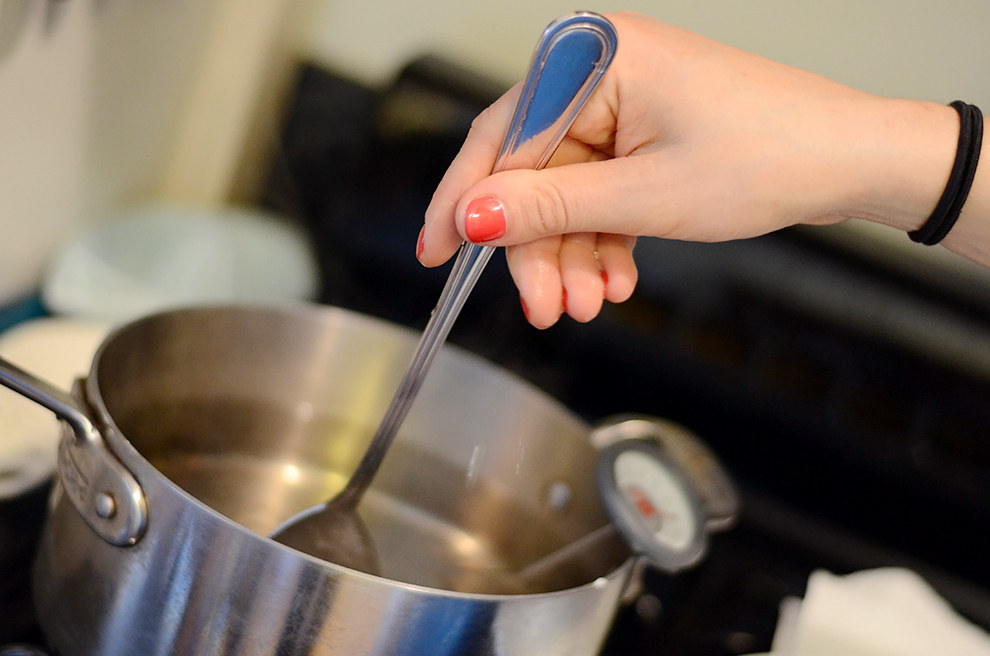
Crack your eggs into individual bowls or ramekins, then drop the first one into the center of the whirlpool.
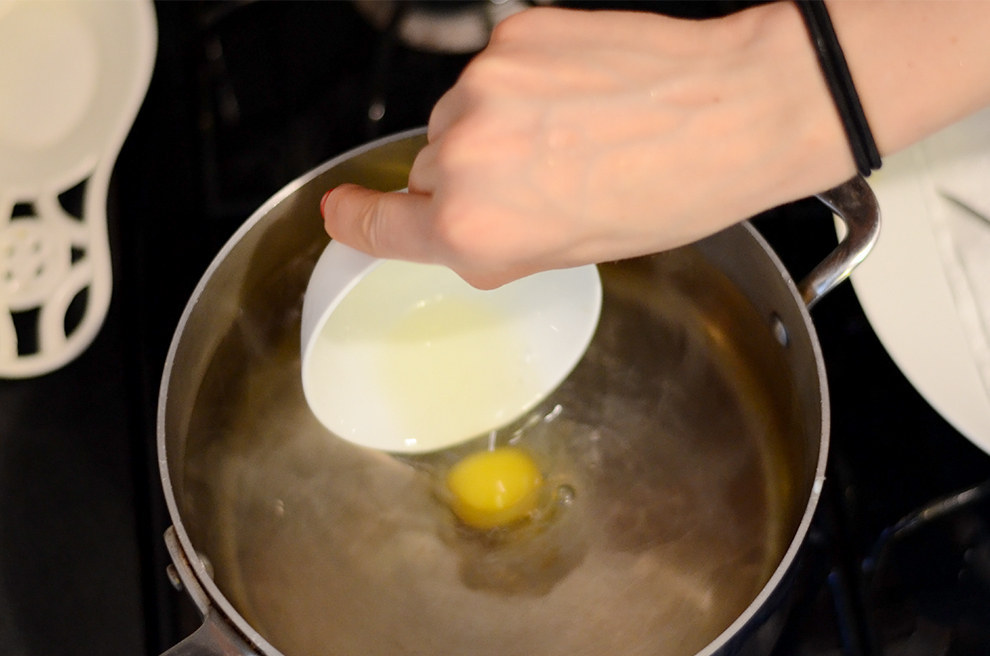
Set a timer for 3 minutes and wait. The white of the egg should wrap gently around the yolk.

As soon as 3 minutes are up, use a slotted spoon to gently lift your egg out of the water.
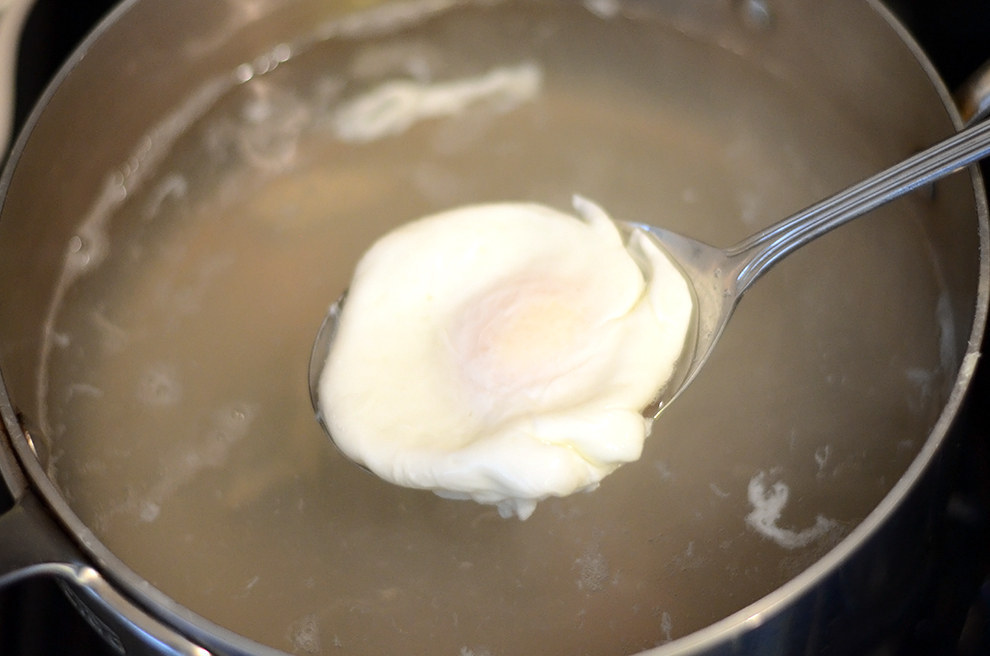
Set the poached egg on a paper-towel lined plate, and repeat the process with the remaining three eggs.
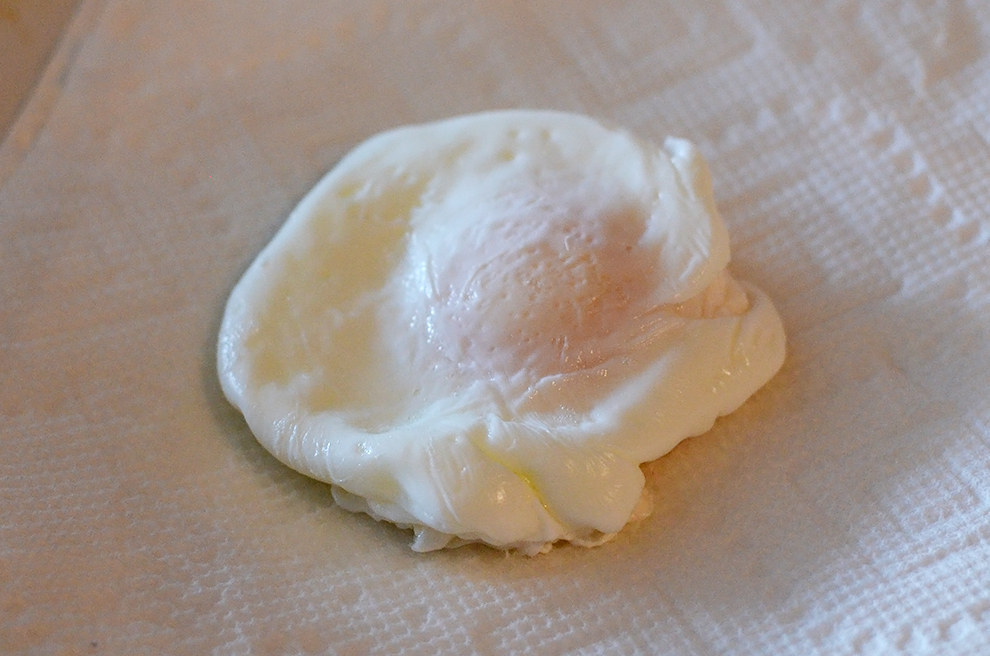
Then, serve by laying two potato halves on a plate, spooning some of the vegetable mixture over them, and topping everything with a poached egg.

